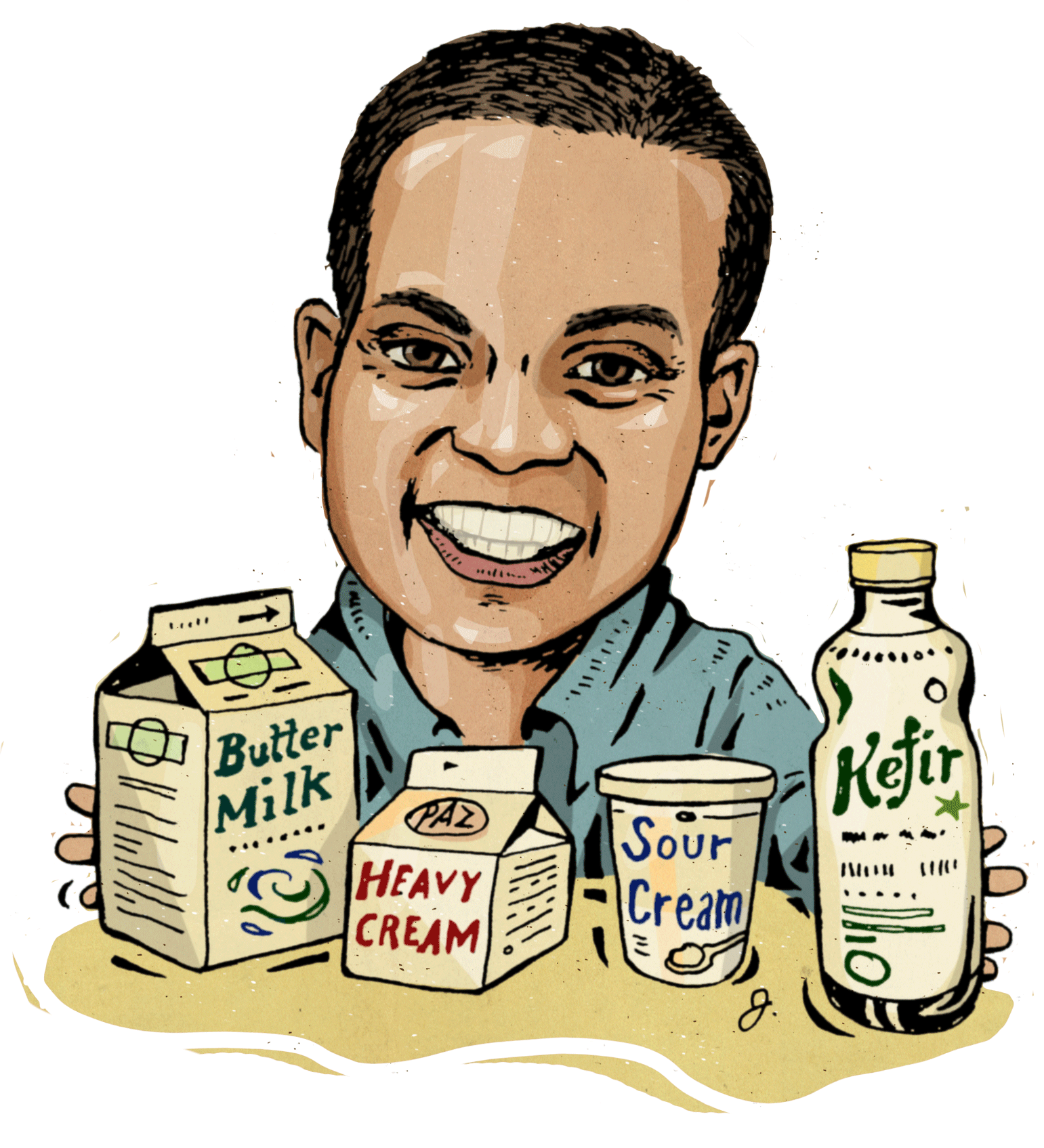In his debut cookbook, “Season: Big Flavors, Beautiful Food,” food writer and photographer Nik Sharma takes a novel approach to the cuisine of his Indian heritage. As he puts it in the introduction, “Mine is the story of a gay immigrant, told through food.”
In thoughtful recipes with beautiful photos, Sharma employs the ingredients he grew up with living in Mumbai in new ways. There’s apple masala chai cake, steak with orange peel and coriander, and chaat-masala grilled pork chops. He started developing recipes and telling his story through his blog, A Brown Table, in 2011, and began writing a regular column in the San Francisco Chronicle in 2016. But it was his background in microbiology—he came to the U.S. in 2002 to study biochemistry at the University of Cincinnati—that led him to discover a better homemade crème fraîche.

Usually a mixture of heavy cream and buttermilk or sour cream, homemade crème fraîche stands at room temperature until it turns silky, thick and tangy.
Sharma experimented with alternatives to buttermilk and sour cream. When he tried using kefir—a sour, slightly fizzy fermented dairy product—he discovered its unique bacterial strains gave the crème fraîche more tang and an even silkier texture. We replicated his results by stirring 1 tablespoon kefir into 1 cup heavy cream, then allowing the mixture to sit at room temperature for 48 to 72 hours. Once it was thick and creamy, it was ready for use. Sharma mixes the crème fraîche into chicken, potato and egg salads—think, fingerlings with crispy sage and garlicky kefir crème fraîche, to be exact—or spikes it with maple syrup and dollops it onto broiled fruit. Kefir crème fraîche keeps refrigerated for up to a week.
Try it with our recipe for Mussels with Fennel, Crème Fraîche and Vermouth.



